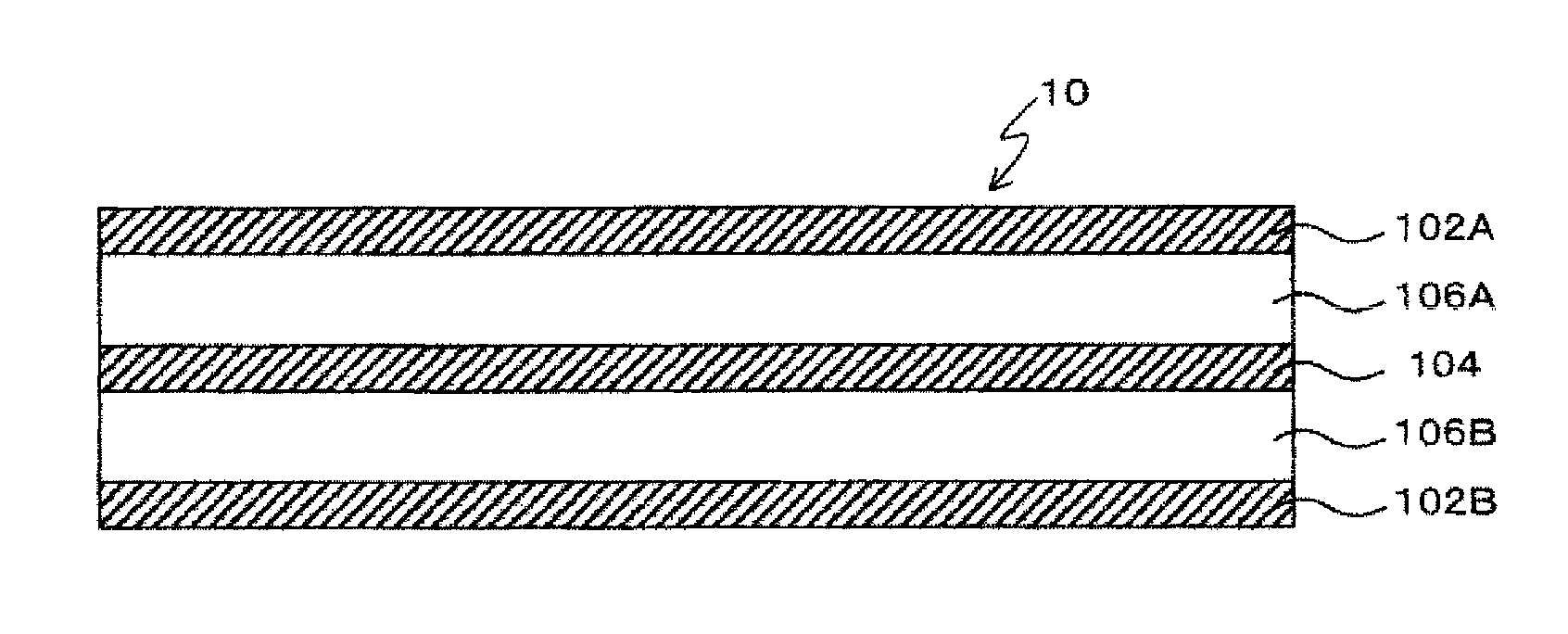Sound-Transmitting Member
a technology of sound-transmitting member and sound-transmitting device, which is applied in the direction of waterborne vessel navigational aids, instruments, transportation and packaging, etc., can solve the problems of large system performance impact, inability to achieve a practically sufficient high frequency bandwidth, and difficulty in using in a high frequency band of 20 khz or greater, so as to improve sound-transmitting characteristics, reduce pressure, and reduce reflection
- Summary
- Abstract
- Description
- Claims
- Application Information
AI Technical Summary
Benefits of technology
Problems solved by technology
Method used
Image
Examples
first embodiment
[0045]FIG. 1 is an explanatory drawing illustrating a configuration of a marine sonar device 20 equipped with a sound-transmitting member. The sound-transmitting member according to the present technology is used in order to form a sound-transmitting region α in the sonar device 20, for example.
[0046]The sonar device 20 is disposed at a leading end of a sonar device support platform (not illustrated) provided in the body of a ship.
[0047]The sonar device 20 includes a transducer 24 and an acoustic window 26.
[0048]The transducer 24 is mounted on a frame 28 made of fiber reinforced plastics (FRP) supported on the inside of the acoustic window 26, and is disposed towards the front of the ship.
[0049]The acoustic window 26 is intended for protecting the transducer 24 and is provided so as to cover the transducer 24, with water filling the inside of the acoustic window 26.
[0050]The acoustic window 26 has a cylindrical portion 26A, and a curved surface portion 26B that is formed in a curved...
second embodiment
[0094]In the first embodiment, one intermediate layer and two core layers are disposed between the two skin layers, the intermediate layer and the core layer being alternately stacked (N=1).
[0095]In the second embodiment, the number of intermediate layers and core layers is increased, and N intermediate layers and N+1 core layers are disposed between the two skin layers, the intermediate layer and the core layer being alternately stacked (N≧2).
[0096]FIGS. 8A and 8B are explanatory drawings illustrating configurations of sound-transmitting members 30 and 40 according to the second embodiment.
[0097]The sound-transmitting member 30 illustrated in FIG. 8A includes two skin layers 302A and 302B, two intermediate layers 304A and 304B, and three core layers 306A, 306B, and 306C, in which the intermediate layer and the core layer are alternately stacked between the skin layers (N=2). More specifically, the layers are stacked in the following order from the top of FIG. 8A: the skin layer 302...
PUM
| Property | Measurement | Unit |
|---|---|---|
| thicknesses | aaaaa | aaaaa |
| elastic modulus | aaaaa | aaaaa |
| frequency | aaaaa | aaaaa |
Abstract
Description
Claims
Application Information
 Login to View More
Login to View More - R&D
- Intellectual Property
- Life Sciences
- Materials
- Tech Scout
- Unparalleled Data Quality
- Higher Quality Content
- 60% Fewer Hallucinations
Browse by: Latest US Patents, China's latest patents, Technical Efficacy Thesaurus, Application Domain, Technology Topic, Popular Technical Reports.
© 2025 PatSnap. All rights reserved.Legal|Privacy policy|Modern Slavery Act Transparency Statement|Sitemap|About US| Contact US: help@patsnap.com



